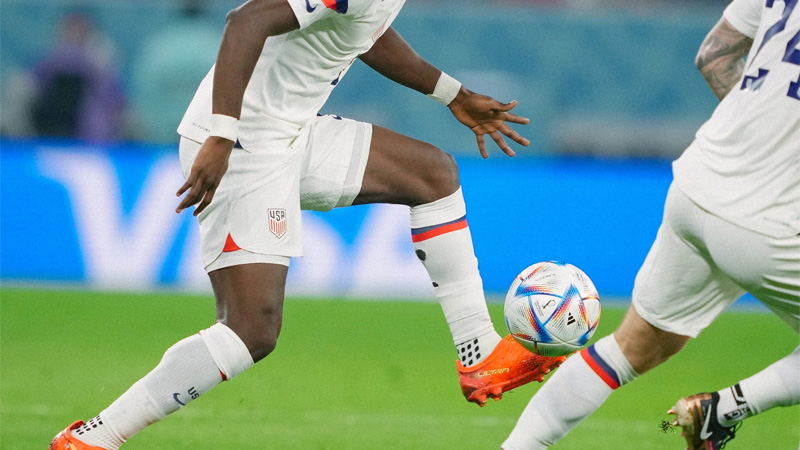Soccer, often referred to as the beautiful game, captivates the hearts of millions worldwide with its simplicity and excitement.
Central to the sport’s allure are its rules, which provide structure and fair play, ensuring a thrilling and competitive experience for players and fans alike.
The top 10 rules of soccer form the backbone of this global phenomenon, guiding players through each match while instilling a sense of sportsmanship and strategic thinking.
From the offside rule that challenges attackers to remain tactical in their positioning to the various ways the ball can go out of bounds, these rules shape the flow and dynamics of the game.
In this exploration, we delve into the fundamental principles of soccer, shedding light on the essential rules that define this celebrated sport.
The Top 10 Rules Of Soccer
Here are the top 10 rules of soccer-
1. Offside Rule
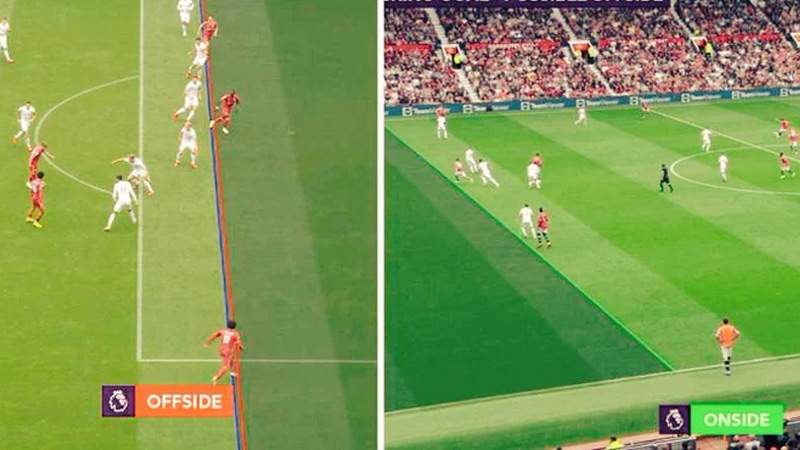
The offside rule is one of the fundamental rules in soccer. It states that an attacking player is in an offside position if they are nearer to the opponent’s goal line than both the ball and the second-last defender at the moment the ball is played to them.
Being in an offside position is not an offense in itself, but a player is penalized for being offside if they become actively involved in the play, such as receiving the ball or interfering with an opponent.
2. Fouls and Free Kicks

Fouls occur when a player engages in unfair play, such as pushing, tripping, or using excessive force against an opponent.
Depending on the location of the foul, the opposing team may be awarded a free kick, either direct (a shot can be taken directly at the goal) or indirect (another player must touch the ball before a goal can be scored).
Serious fouls may result in a yellow or red card, which indicates a caution or expulsion from the game, respectively.
3. Penalty Kicks
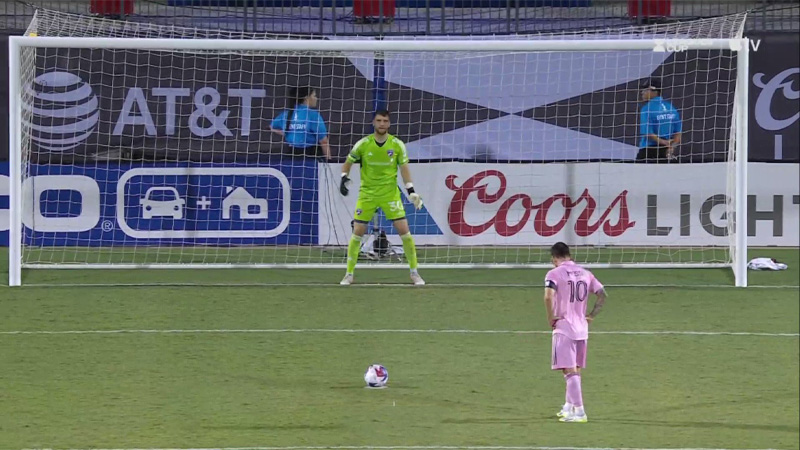
Penalty kicks are awarded when a defending player commits a foul inside their own penalty area.
The attacking team takes the penalty kick, which is a direct shot from the penalty spot, 12 yards away from the goal line, and only the goalkeeper is allowed to defend.
4. Throw-Ins
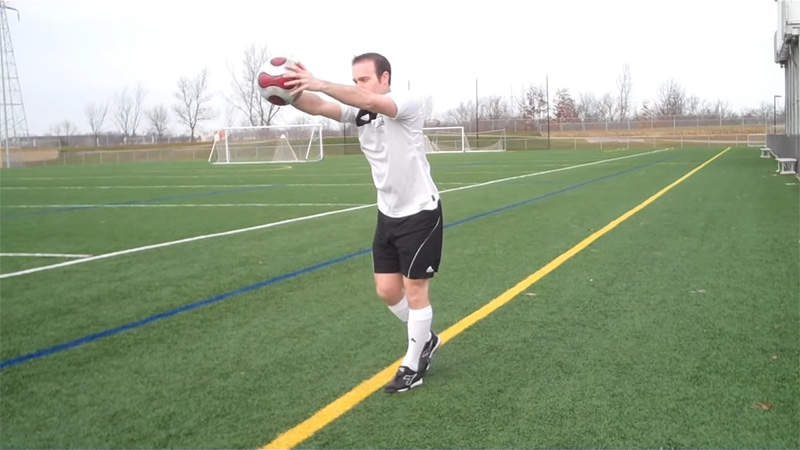
When the ball crosses the touchline (sideline), it is put back into play by a throw-in.
The player taking the throw-in must have both feet on or behind the touchline and use both hands to deliver the ball from behind and over their head.
5. Goal Kicks
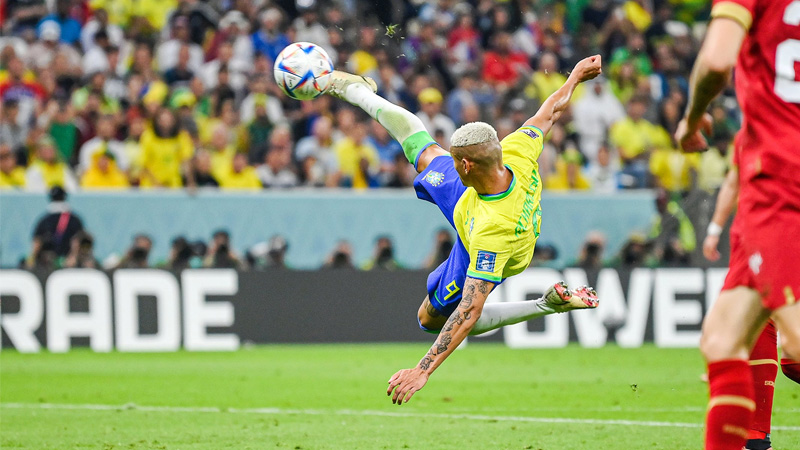
A goal kick is awarded to the defending team when the ball crosses the goal line, and the last player to touch it was from the attacking team.
The defending team takes the goal kick from anywhere within their six-yard box (goal area).
6. Corner Kicks

Corner kicks are awarded to the attacking team when the ball crosses the goal line, and the last player to touch it was from the defending team.
The attacking team takes the corner kick from the corner arc nearest to where the ball went out of bounds.
7. Handball Rule
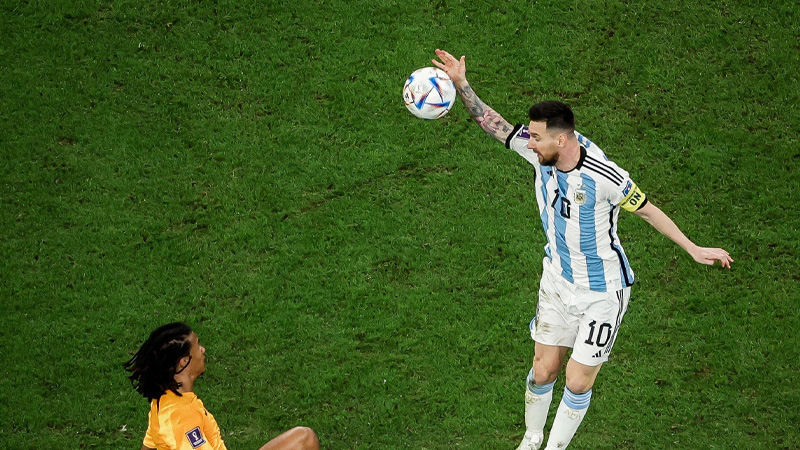
A player is penalized for handball if they deliberately handle the ball with their hand or arm.
However, unintentional handball is not considered an offense unless it leads to a goal or goal-scoring opportunity.
8. Duration of the Match

A standard soccer match consists of two halves, each lasting 45 minutes, with a 15-minute halftime break.
Extra time may be added to the match in knockout stages to determine a winner in case of a draw. In some cases, penalty shootouts are used as a tiebreaker.
9. Substitutions

Each team is typically allowed a certain number of substitutions during a match. Substituted players must leave the field at the nearest point, and the new player can enter only after the previous player has left.
10. The Referee’s Decision
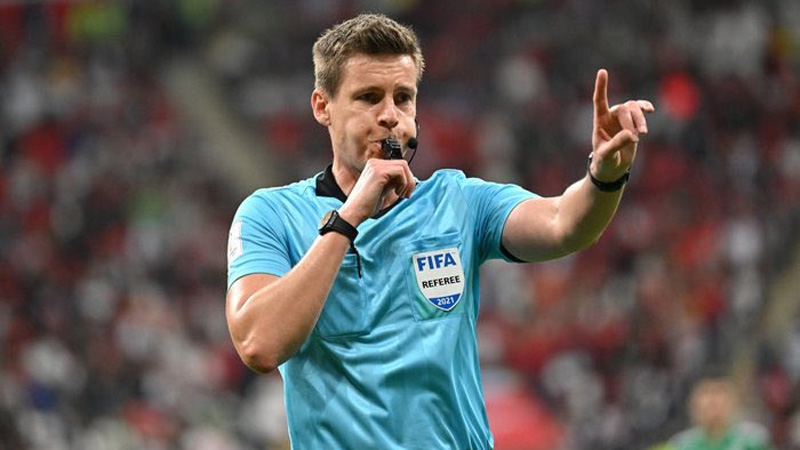
The referee’s decision is final and must be respected by players, coaches, and spectators.
Arguing or showing dissent toward the referee’s decision can result in disciplinary action, including cautions (yellow cards) or expulsions (red cards).
Referees are responsible for enforcing the rules and ensuring fair play throughout the match.
Rules Of Soccer – OFFSIDES
Here are some rules of soccer offside-
Definition of Offside
The offside rule in soccer is a critical aspect of the game, designed to prevent attackers from gaining an unfair advantage over the defending team.
A player is considered to be in an offside position if they are nearer to the opponent’s goal line than both the ball and the second-to-last defender (typically the last outfield player) at the moment when the ball is played to them.
Passive vs. Active Offside
It’s important to understand the distinction between passive and active offside. A player in an offside position is not penalized for merely being in that position; they become active offside when they are involved in active play.
Being active offside means receiving the ball from a teammate or interfering with an opponent while in an offside position.
Not Offside from Goal Kicks, Throw-Ins, or Corner Kicks:
A player cannot be penalized for offside if they receive the ball directly from a goal kick, throw-in, or corner kick. These are considered restarts of play and do not apply the offside rule.
Offside Position vs. Offside Offense
It’s essential to differentiate between being in an offside position and committing an offside offense. A player in an offside position is not committing an offense unless they become actively involved in play while offside.
Exceptions for Own Half and Goalkeeper
A player is not considered offside if they are in their team’s own half of the field when the ball is played to them.
Additionally, the goalkeeper is exempt from the offside rule and can handle the ball outside their penalty area without being penalized for offside.
Flagging for Offside
Assistant referees (linesmen) are responsible for signaling when an offside offense occurs.
They raise their flag to indicate an offside violation, and the on-field referee will then make the final decision based on their judgment and input from the assistant referee.
Restart after Offside Infraction
When an offside offense is called, the opposing team is awarded an indirect free kick from the spot where the offside player interfered with play, received the ball, or gained an advantage.
The free kick is not taken from the offside position but from the location where the player committed the offense.
Understanding the offside rule is crucial for players, coaches, and fans, as it can influence the flow and outcome of soccer matches.
The rule is in place to encourage attacking players to maintain a fair distance from the opponent’s goal line, promoting strategic play and preventing unfair advantages that may arise from being too close to the goal.
Rules Of Soccer – OUT OF BOUNDS
Here are the rules of soccer-out of bounds-
Ball Fully Crosses the Boundary Line
In soccer, a ball is considered out of bounds when it completely crosses the boundary line, either the touchline (sideline) running the length of the field or the goal line at the ends.
The entire ball must pass over the line, including above the ground and below the height of the line.
Throw-In for the Opposing Team
When the ball goes out of bounds on the touchline, the opposing team is awarded a throw-in.
A player from the team that did not touch the ball last before it went out of bounds takes the throw-in.
The player must use both hands and deliver the ball from behind and over their head while keeping both feet on or behind the touchline.
Restart with Goal Kick
If the ball crosses the goal line, but not into the goal, and was last touched by an attacking player, a goal kick is awarded to the defending team.
The defending team’s goalkeeper takes the goal kick from anywhere within the six-yard box (goal area).
Corner Kick for Attacking Team
If the ball crosses the goal line, but not into the goal, and was last touched by a defending player, a corner kick is awarded to the attacking team.
The attacking team takes the corner kick from the corner arc nearest to where the ball went out of bounds.
Ball in Play Immediately After Restart
Once the ball is put back into play, either by a throw-in, goal kick, or corner kick, it is considered in play immediately. Players from both teams are free to contest for the ball, and the game continues.
Special Rules for Kick-Ins in Futsal
In futsal, a variant of soccer played on a smaller indoor field, the ball is put back into play with a kick-in instead of a throw-in.
The kick-in is taken from the touchline and can be performed with either foot, but like a throw-in, the player must keep both feet on or behind the touchline while taking the kick.
Understanding the rules of out-of-bounds in soccer is crucial for players, coaches, and officials, as these situations can result in restarts of play that may lead to goal-scoring opportunities.
It is important for players to be aware of their positioning and make strategic decisions to keep the ball in play or regain possession efficiently when it goes out of bounds.
Similarly, referees must be attentive to determine the correct restart method and ensure fair play in all matches.
FAQ
How does the offside rule work in soccer?
The offside rule in soccer prevents attacking players from gaining an unfair advantage by positioning themselves behind the last defender when the ball is played to them. A player is considered offside if they are nearer to the opponent’s goal line than both the ball and the second-last defender at the moment the ball is passed to them.
What happens when a player commits a foul in soccer?
When a player commits a foul in soccer, the opposing team is awarded a free kick from the spot of the foul. If the foul occurs inside the penalty area, the opposing team receives a penalty kick, which is a direct shot on goal from the penalty spot.
How are substitutions managed in soccer?
Each team is typically allowed a certain number of substitutions during a soccer match. The number of substitutions can vary depending on the competition and league rules.
How is the duration of a soccer match determined?
A standard soccer match consists of two halves, each lasting 45 minutes, with a 15-minute halftime break. However, in some competitions, such as knockout stages or friendly matches, extra time may be added if the game ends in a draw.
Conclusion
In the realm of soccer, the top 10 rules serve as the canvas upon which the drama and brilliance of the game unfold.
From the intricacies of the offside rule to the excitement of penalty kicks and the precision of corner kicks, these rules govern every moment of play.
Embraced by players, coaches, and fans, they represent the essence of fair competition and uphold the spirit of sportsmanship that makes soccer a universal language.
The rules of soccer transcend borders and cultures, uniting people from diverse backgrounds in their passion for the sport.
As players chase the elusive goal and teams strive for victory, these rules stand as a testament to soccer’s timeless appeal and enduring legacy on the world stage.

